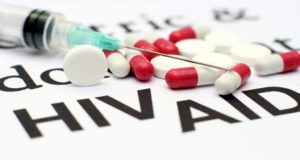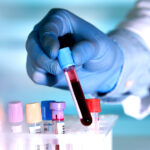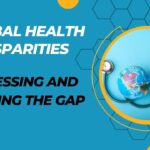The Indian Systems of Medicine in the treatment of AIDS
World AIDS day is celebrated on 1st December of every year with the aim to raise the public awareness about HIV/ AIDS. 2017 marks the 29th anniversary of World AIDS Day. Acquired Immuno-Deficiency Syndrome (AIDS) is a pandemic disease caused by Human Immuno-deficiency Virus (HIV) infection. Government organizations, non-governmental organizations, civil society and health officials take part in the celebrations by organizing speeches or forums and discussion related to the AIDS. Between 1981 and 2007 around 25 million people died because of the HIV infection. In the year 2007, around 2 million people of which at least 270,000 children were infected with this epidemic disease, even after the anti retroviral treatment (ART) were made available at many places.


Using a slogan “Everybody counts”- World Health Organization is advocating for access to safe, effective, quality and affordable HIV services, medicines, diagnostics, other health commodities for all people who need them. Universal Health Coverage (UHC) means that all people receive health services they need without experiencing financial hardship, including access to the full range of HIV services AIDS originated in the 19th and 20th century in the west and central region of Africa. There is no cure for it, the course and severity of the disease can be lessened by regular treatment. The disease was first recognized in 1981, but identified by the name of AIDS on 27th of July in 1982. HIV virus attacks the T-cells of immune system of the human body and causes the disease known as AIDS. The infection can be easily transmitted from one person to the other directly through mucous membrane, blood, or body fluids like blood, semen, vaginal fluids, and breast milk of infected persons.
History of World AIDS Day celebrations:
World AIDS Day was first visualized in the month of August, 1987 by Thomas Netter and James W. Bunn, public information officers for the AIDS Global Programme at the WHO (World Health Organization) in Geneva, Switzerland. Dr. Jonathan Mann, Director of the AIDS Global Programme, approved the idea and recommended the observance on 1st of December in the year 1988. The official announcement for World AIDS Day was declared in the year 1995 by The President of United States of America and has become the most recognized international health day celebration. The Joint United Nations Programme on HIV/ AIDS, also known as the UNAIDS, was promoted worldwide in the year 1996. World AIDS campaign was launched by the UNAIDS in 1997 to focus on AIDS programs, better communications, disease prevention and disease awareness learning for the whole year. In the beginning, the World AIDS Day themes were focused only on the children as well as the young people, and were later recognized as a family disease as any person of any age group can be infected with HIV. In 2007, symbolizing by an iconic display of AIDS Ribbon by White House marked the beginning of the World Aids Day celebrations, which offers the key opportunity to the health organizations to increase the awareness among people, make the most possible access to the treatment and discuss the preventive measures. A simple red ribbon is one of the most widely recognized symbols of HIV and AIDS and is the global symbol for solidarity with HIV-positive people and those living with AIDS.
TEN facts regarding HIV/AIDS- (WHO Fact sheet, Updated May 2017):
Fact 1: Human immuno deficiency virus infects cells of the immune system with progressive deterioration of the immune function, and breaks down the body’s ability to protect against infections and other diseases. AIDS is the most advanced stage of HIV infection, defined by association of any of more than 20 opportunistic infections or related cancers.
Fact 2: HIV can be transmitted through the following ways: Unprotected sexual intercourse (vaginal or anal) or oral sex with an infected person; Transfusions of contaminated blood or blood products or transplantation of contaminated tissue; Sharing of injecting equipment (needles, syringes) and solutions contaminated with virus; contaminated surgical and tattooing equipments and other sharp instruments ; transmission between a mother and her baby during pregnancy, childbirth and breastfeeding.
Fact 3: An estimated 36.7 million (34.0–39.8 million) people were living with HIV in 2015, and 1.8 million (1.5–2.0 million) of these were children. The vast majority of people living with HIV are in low- and middle-income countries. An estimated 2.1 million (1.8–2.4 million) people were newly infected with HIV in 2015. An estimated 35 million people have died from HIV-related causes so far, including 1.1 million (940 000–1.3 million) in 2015.
Fact 4: Combination antiretroviral therapy prevents HIV from multiplying in the body. Effective ART treatment results in a reduction in viral load (the amount of virus in the body), greatly reducing the risk of transmitting the virus to sexual partners. If the reproduction of HIV stops, then the body’s immune cells are able to live longer and provide the body with protection from infections. If the HIV +ve partner in a couple is on effective ART, the chances of sexual transmission to the HIV negative partner can be reduced by as much as 96%. Expanding the coverage of HIV treatment contributes to HIV prevention efforts.
Fact 5: As of mid-2016, 18.2 million people were receiving ART worldwide; More than 16 million affected population lives in low-and middle-income nations. In 2016, WHO released the second edition of the “Consolidated guide-lines on the use of anti-retroviral drugs for treating and preventing HIV infection” with recommendations to provide lifelong ART to all children, adolescents and adults, including all pregnant and breastfeeding women living with HIV, regardless of CD4 cell count. WHO has expanded earlier recommendations to offer pre-exposure prophylaxis of HIV (PrEP) to selected people at substantial risk of acquiring HIV; and alternative first-line treatment regimens are also recommended.
Fact 6: HIV testing can help to ensure treatment for people in need: Access to HIV testing and medicines should be dramatically accelerated in order to reach the goal of ending AIDS by 2030. HIV testing reach is still limited, an estimated 40% of people with HIV (over 14 million) remain undiagnosed and their infection status is unknown. WHO recommends innovative HIV-self-testing and partner notification approaches to increase HIV testing and diagnostic services.
Fact 7: An estimated 1.8 million children are living with HIV: According to 2015 statistics, most of these children live in sub-Saharan Africa and were infected through transmission from their HIV-positive mothers during pregnancy, child-birth or breast-feeding. Nearly 150 000 children (110 000–190 000) were newly infected in 2015.
Fact 8: Elimination of mother-to-child transmission is becoming a reality: Access to preventive interventions remains limited in many low and middle income countries. In 2015, almost 8 out of 10 pregnant women living with HIV (1.1 million) received anti-retroviral treatment worldwide. In 2015, Cuba was the first country declared by WHO, as having eliminated mother-to-child transmission of HIV and syphilis. In June 2016, Armenia, Belarus and Thailand were validated for eliminating mother-to-child HIV transmission.
Fact 9: HIV is the greatest risk factor for developing active TB disease: In 2015, an estimated 1.2 million (11%) of the 10.4 million people who developed TB worldwide were HIV +ve and approximately 390 000 deaths were reported. The WHO African Region accounted for around 75% of the estimated number of HIV-related TB deaths
Fact 10: Comprehensive prevention package of services include:
HIV testing and counseling:
Correct and consistent use of female or male condoms;
Get treated for sexually transmitted infections (STI);
Promotion of safer sexual practices, such as avoidance of penetrative sex,
Voluntary medical male circumcision in 14 priority countries;
Avoid injecting drugs, or if you do, always use sterile needles and syringes; ensure that blood or blood products for transfusion are tested for HIV; start antiretroviral therapy immediately, if you have tested positive for HIV, for your own health and to prevent HIV transmission to your sexual or drug using partner or to your infant, if you are pregnant or breastfeeding; Use pre-exposure prophylaxis prior to engaging in high risk behavior; Get post-exposure prophylaxis if there is the risk that you have been exposed to HIV infection in both occupational and non-occupational settings.
Objectives of world AIDS day:
(1) To guide the member states for globally increasing the prevention and control measures for HIV/AIDS.
(2) Offer technical support for the plan for prevention, care, and treatment for HIV/AIDS including, testing, and counseling of mothers for transmitting the infection to the child, STI control and antiretroviral therapy.
(3) To increase the awareness in people about the antiretroviral medicines and therapies that can help fight against HIV/AIDS.
(4) Involve the peer groups in the campaign for getting the most effective result.
(5) Encourage more students from the schools, universities and social structures to contribute in the competitions organized for the cause of AIDS.
(6) To decrease and control the number of patients infected by HIV/AIDS and to encourage the peer groups for use of condom and safe sex practices.
World AIDS Day celebration is the focal point of the World AIDS Campaign, which is active all year round. It has become one of the most recognized international health days and a key opportunity to raise awareness, commemorate those who have passed on, and celebrate victories, such as increased access to treatment and prevention services.
(1) Many health education campaigns are organized to help increased awareness in the people and promote the day.
(2) Anti-discrimination activities are launched on that day.
(3) AIDS Memorial Quilt project is organized in USA, to remember the people died of AIDS-related conditions. Friends and family members of deceased AIDS sufferers construct quilt panels, and are displayed all over the USA.
AIDS Awareness Months:
Different governments and organizations have declared different months as AIDS Awareness Month. The most popular choices are October and December. December is chosen to coincide with World AIDS Day. AIDS Day celebrations in India is on Friday, 1st of December, 2017.
Signs and Symptoms of HIV/AIDS:
A person with HIV/AIDS has the following signs and symptoms: fever, chills, Sore throat, and sweats during night, enlarged lymph glands, weight loss, tiredness, weakness, Joint pain, muscle ache, and red rashes. HIV virus cause damages to the immune system and the infected person does not feel any symptoms and appears healthy. This makes the disease difficult to identify early and cure completely. In the late stage of HIV infection the virus weakens the immune system to fight against infection and the person develops illness with AIDS and show the following features: Blurred vision, fever (above 100°F), weight loss, tuberculosis, pneumonia, permanent tiredness, night sweats, diarrhea (persistent, chronic), swollen glands, white spots on the tongue and mouth, shortness of breath, Kaposi sarcoma, cancers of the lungs, cervix, rectum, liver, head and neck and the lymphomas (cancer of immune system).
Early detection:
The U.S. Centers for Disease Control and Prevention recommends that all people should get tested for HIV as part of their regular medical care. National HIV Testing Day (NHTD) was first observed on June 27, 1995.The Federal theme for 2017 is “Test Your Way. Do It Today”.
United States Preventive Services Task Force (USPSTF) recommends HIV testing:
As part of regular medical care for people 15 to 65 years old.
For all pregnant women.
For people younger than 15 and older than 65 if they have a high risk for
HIV, such as for people who engage in high-risk behavior.
Diagnosis:
HIV is diagnosed when antibodies to HIV are found in the blood by ELISA test and confirmed by Western blot method. Rapid antibody tests give results right away, but positive results needs to be confirmed by the ELISA or Western blot test. HIV is diagnosed only after two or more positive ELISA tests are confirmed by one positive Western blot assay. The tests can be done on the same blood sample. ELISA test results are available in 2 to 4 days and Western blot method takes 1 to 2 weeks.[Normal Person has a CD4 cell count between 500 and 1500 ; people living with HIV, usually in pretty good health have a count over 500]. AIDS is the last and most severe stage of HIV infection. The definition of AIDS include all HIV infected individuals with CD4+ cell count less than 200 cells cells/µL of blood (CD4 < 14 %) and those with certain HIV-related conditions and symptoms. Opportunistic infections are common in people with weakened immune systems and susceptible to Pneumo-cystis pneumonia, Kaposi’s sarcoma and a variety of other illnesses associated with decreased immunity (The US Centers for Disease Control and Prevention).
Treatment Overview:
The most effective treatment for HIV is antiretroviral therapy (ART), a combination of several medicines that aims to control the amount of virus in your body. Guidelines to be followed for a healthy living with HIV infection include:
(1) Keep immune system strong by nutritious diet, quit smoking, and learn to avoid infection.
(2). Monitor your CD4+ (white blood cells) counts to check the effect of the virus on your immune system.
(3) Counseling to handle the strong emotions and stress that follow diagnosis of HIV.
(4). Modify lifestyle to reduce stress so that you can manage the HIV illness better.
The Indian Systems of Medicine in AIDS treatment (AYUSH):
Multiple medical systems such as Ayurveda, Yoga and Naturopathy, Unani, Siddha, and Homeopathy (AYUSH) have existed for centuries before the rise of biomedicine. AYUSH system focuses on “vital force”- when reduced exposes the patient susceptible to infections or disorders. Vital force is the overall body and mind health of the person with emphasis on a more holistic moral and lifestyle choice.
Ayurvedic AIDS Treatment:
AIDS is primarily a disease of low ojas (immunity) according to Ayurveda. Ojas provides the physical and mental strength to resist disease. Rasayana is a branch of Ayurveda which specifically deals with increasing immunity and vitality through the use of various herbs, minerals and Ayurvedic techniques and practices. After initial detoxification, the strength, immunity and vitality of the patient are increased through rasayanic therapies. Ayurvedic treatment, Diet and Lifestyle modifications:
(1) The first step is to give emotional and moral support to the patient.
(2) The patient needs easily digestible, nourishing food, and be engaged in fruitful activities.
(3) Ayurveda help in preventing AIDS by strengthening the body’s defense system by herbs and Achara Rasayana (behavioral medicine). Amla (Emblica officinalis), Bala (Sida Cordiolia), Haritaki (Terminalia Chebula), Nirgundi (Vitex nirgundo) and Amrita (Tinospora Cardifolia) are the herbals effective in the prevention of AIDS.
(4) Ayurvedic tonic and rasayanas (rejuvenators) should be given to strengthen the system, boost immunity levels and stimulate appetite. After gaining some strength, shodhana techniques (elimination/ purifying) are used to expel toxins from the body through enemas, purgation, steam bath, and emesis.
(5) A nourishing diet along with medicated ghee preparations and soups is recommended. Spicy, oily and acidic foods are to be avoided. Chyavanprash (health Supplement), raktavardhak (Blood purifier) and triphala (three fruits) are recommended for AIDS patients.
Yoga and Naturopathy:
Naturopathy can be defined as a drugless, noninvasive, rational and evidence-based system of medicine imparting treatments with natural elements based on the theories of vitality, toxemia and the self-healing capacity of the body, as well as the principles of healthy living, and uses the body’s innate capacity to cure diseases. Long term Naturopathy and yogic lifestyle modifications in HIV +ve patients on ART show increase in the CD4 count. Improper diet, sedentary lifestyle, addiction, and behavioral attitudes like anxiety, phobia are the negative lifestyle methods altered by this method of treatment. Naturopathy and yoga is recommended as a strong adjuvant in the treatment of HIV-positive individuals.
Unani System of Medicine:
Qillat-e-Manaat (immunity power) was in use for long before the discovery of the immune system or the development of germ theory. Treatment: Unani physicians agree that an imbalance of the human blood causes HIV infection; Supportive treatments include: 1) Cupping (Hijama) given to alleviate pain 2) Maqqavi Azae- Raeesa advia tonics to support vital organs and immunity and 3) Ilajbil-giza special diet therapy.
Siddha principles of treatment of HIV etiology:
HIV is taught as “vettai noi” or ‘theivu noi”. Primary treatment is with Rasa Gandhi Melugu, a mercury preparation with some additional 40 drugs. Other drugs like Kodiveli, (Plumbago zeylanica Linn, belonging to the family Plumbaginaceae), Panai vellam (palm jaggery), Garlic, Sukku (dry ginger), Melagu (wax), and Thippili (Indian long pepper or piperum longum) are also added into a form of melugu. Rasam (mercury) and Kandhagam (sulphur) are used as broad spectrum antibiotics. Diet and medications that enhance body immunity are the important components of the treatment.
Homeopathy place emphasis on the supposed miasm (susceptible constitutional types) when treating patients. They identify the miasm based on the symptoms that are presenting at the time, rather than on the diagnosis of a particular disease such as HIV which is considered a mixed miasm disease, with different miasms presenting at different times depending on the characteristics of the patient. The prescription of medications is based only on a patient’s presenting symptoms, not on the presence of the virus.
Limitations:
AYUSH-based treatments need additional research to examine specific formulations that hold promise of enhanced immunity and possible inter-actions between traditional formulations and ART.
End AIDS by 2030:
“The 2030 Agenda for Sustainable Development was adopted with a promise to leave no one behind. Nowhere is this more important than in tackling AIDS. Supporting young, vulnerable and marginalized people will change the course of the epidemic.”- Secretary-General Ban Ki-moon.
UNAIDS issued new “Fast-Track: Ending the AIDS epidemic by 2030” strategy on November 18, 2014).The fast track approach aims at 90 percent of people who live with HIV will know their status, 90 % of known HIV +ve positive people will be on treatment, and 90 % of people on treatment will have their viral load suppressed, and making them less likely to transmit the virus by 2020. And by 2030, AIDS will no longer be a threat to public health.
1. More health workers, ready for anything: We need 7.2 million additional doctors, nurses and midwives worldwide. Unless we invest in the global health workforce, the number will grow to 12.9 million by 2035.
2. Focus on “key populations”. Members of populations of sex workers, men who have sex with men, transgender people and drug users (Injectable) are being marginalized and stigmatized. Their isolation and high risk behaviors mean these groups have much higher HIV prevalence rates than others and they suffer the bulk of new infections. LET’S END IT: End isolation, End stigma, End HIV transmission.
3. Rock-solid health systems: Strong health systems with strong foundation built on governance, financing, technology, research, service delivery, and the adequate health workforce (human resources) are essential to address HIV epidemic.
4. Strange bedfellows, unexpected results: Global health needs more innovative and strong partnerships to end the HIV epidemic.
5. ARVs to treat and prevent: In 2011, U.S. scientist Myron Cohen discovered that treating HIV positive patients with their immune systems still strong, anti-retroviral therapy lowers the risk of transmitting the virus and proved the concept of treatment as prevention. More health workers and strong health systems to support community based testing campaigns; counseling, provider- initiated testing, and self testing are crucial for effectiveness of the program and to achieve the Sustainable Development Goals.
Harvest the benefits:
Extensive research and huge investments were made in the field of AIDS over the past decades; the world needs to harvest the benefits of enormous efforts and money spent on AIDS-related conditions. A 90% decrease in the annual number of HIV infections and AIDS-related deaths is expected by 2030. It is possible to save lives, prevent new infections and reduce the cost of therapy by the Fast-Track approach. Avoiding AIDS-related deaths and new infections are the priorities. Achieving these targets will generate economic benefits of 15 times the investment needed for fighting AIDS related issues. It also reduces the financial burden spent on antiretroviral therapy. This will strengthen the health systems by establishing critical infrastructure to focus on other priorities, such as emerging chronic diseases and outbreaks of highly infectious diseases.


Dr.N.Mariappan
Department of Plastic and Reconstructive Surgery
Vydehi Institute of Medical Sciences & research centre,
Whitefield, Bangalore – 66











